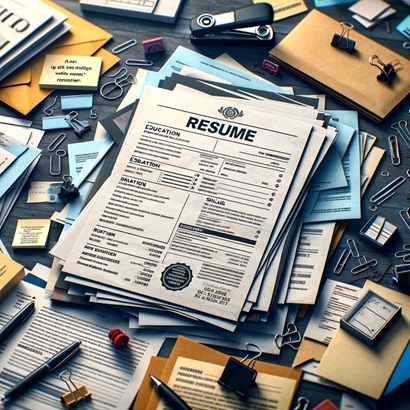How to Update and Optimize an Outdated Resume
Resume Optimizer Pro Editorial Team
Updated April 14, 2025

Updating an outdated resume is a crucial step for anyone looking to re-enter the job market or pivot to a new career. A well-crafted resume must reflect current industry trends and the latest in professional standards to catch the eye of recruiters. If your resume hasn’t been touched in a few years, it might not only miss the mark on showcasing your skills effectively but also fail to pass the increasingly common applicant tracking systems (ATS). This guide will walk you through the essential steps to refresh, update, and optimize your outdated resume.
Evaluating Your Current Resume
Start by taking a comprehensive look at your existing resume to determine which areas are outdated, irrelevant, or in need of improvement. Assess every section critically from the perspective of a hiring manager in your targeted industry.
Identify Outdated Information
Remove any obsolete information such as old contact details, outdated technologies, or references to positions that no longer align with your career goals. Also, eliminate any mentions of high school education or internships that are no longer pertinent if you're mid-career. This helps in clearing clutter and making room for more relevant content.
Assess the Layout and Design
The layout and design of your resume may appear dated if it hasn’t been updated in several years. Modern resumes favor a clean, streamlined look with ample white space and a focus on readability. Ensure that your resume uses a professional font like Arial or Calibri, and stick to a simple but effective format that highlights your experience and achievements without unnecessary embellishments.
Realigning Your Resume with Career Goals
To make your resume effective, it should be tailored to reflect the specific requirements of the jobs you are aiming for. This involves aligning your professional experience and skills with the needs of potential employers in your field.
Update Your Career Objective or Summary
Replace outdated objectives with a professional summary that positions you as the perfect candidate for the jobs you want. This section should serve as a concise pitch that highlights your key qualifications, experiences, and career goals. Make it vibrant and compelling, clearly stating what you bring to the table and how you can contribute to potential employers.
Highlight Relevant Skills and Experiences
Review job listings that interest you and note the skills and experiences that frequently appear. Tailor the ‘Professional Experience’ and 'Skills' sections of your resume to highlight your qualifications that match these requirements. Use action verbs and quantifiable achievements to demonstrate your impact in previous roles.
Incorporating Modern Elements
With the constant evolution in the job application process, staying updated with current trends and technologies is crucial. This includes understanding the role of ATS and the importance of keywords, as well as the utility of adding new sections that reflect modern qualifications.
Optimizing for Applicant Tracking Systems
To ensure your resume makes it through ATS filters, include relevant keywords and phrases that are commonly used in the job descriptions within your field. These systems scan for specific terms that indicate a candidate’s suitability for a position. Therefore, having these keywords in your resume is essential for it to be seen by a human recruiter.
Adding New Sections
Consider adding new sections that can make your resume stand out. For example, a ‘Projects’ section can showcase relevant freelance work, side projects, or ongoing professional development efforts. Similarly, a ‘Certifications’ section can highlight any recent qualifications you have acquired that are pertinent to your career goals.
Regular Updates and Maintenance
A resume is a dynamic document that should be updated regularly to include new skills, experiences, and achievements. As your career progresses, so should your resume.
Keep It Current
Make it a habit to update your resume every six to twelve months or anytime you achieve something significant in your professional life. This could be a new job role, a new skill, a completed project, or a new certification. Regular updates ensure that your resume is always ready for new opportunities.
Seek Professional Feedback
Periodically, have your resume reviewed by a career coach or a mentor in your industry. Feedback from experienced professionals can provide insights that you might overlook and help enhance your resume’s effectiveness.
Conclusion
Updating an outdated resume is more than just a cosmetic fix. It’s about strategically aligning your document with the current demands of the job market and the expectations of modern recruiters. At Resume Optimizer Pro, we facilitate this alignment by offering tools that allow you to choose the job title you aspire to and then highlighting the skills required for that position. You can select from these skills those you have experience with, and we will seamlessly integrate them into your resume. This tailored approach ensures that your resume resonates with the needs of employers, making you a more visible and attractive candidate for your desired job title.